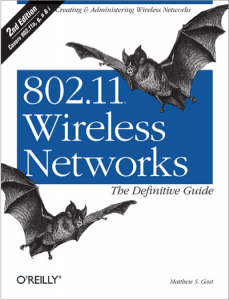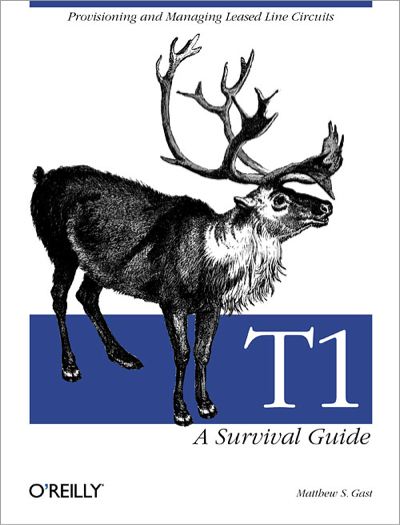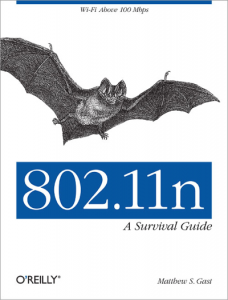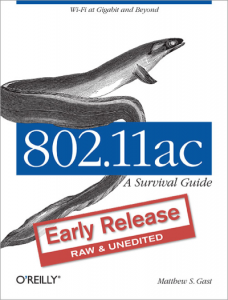Now I know what you are thinking. That’s an odd title. You might think this is about me, but it isn’t. It’s about another fella named Matthew. Perhaps the word “curse” is a bit extreme, but please allow me to explain.
There’s this guy I know. He works for Aerohive and works with the 802.11 working group. His name is Matthew Gast, and he writes books that make me lose sleep in search of further understanding. You may know him from the 802.11 Wireless Networks book and maybe even the more recent 802.11n: A Survival Guide book. That isn’t where I know him from. The first book of his that I read was this one:
In case you aren’t familiar with this book, your eyes are not deceiving you. That is a book on T1 circuits and it drove me insane for a brief period. Several years ago I was reading every technical book I could get my hands on in terms of networking. I had a subscription to Safari Books Online and I was plowing through title after title at rapid pace. Lunch hours, late nights, and weekends were spent absorbing as much as I could because I couldn’t stand the thought of not knowing about everything there was to know about networking. I was working a job where there were literally hundreds of T-1 circuits spread out across a nationwide network. Any additional information I could use in regards to those circuits would be beneficial and I would be able to converse with the service providers more on their level, which would help reduce the time spent troubleshooting.
And so it was that I summoned the powers of my Safari membership and began to read an entire book on the T1. My mind was exposed to things I was somewhat familiar with. Line coding and framing modes were terms I was used to muttering when asked about how the circuit was configured. B8ZS and ESF were the stock answer, but what did they really mean? That book on the T1 exposed me to the meat and potatoes of B8ZS and ESF. I could see the 1’s and 0’s clearly. I suddenly knew how circuit alarms were generated. I was able to comprehend why the serial interface on a router showed a bandwidth of 1536kbps instead of 1544kbps for a T1. It all made sense. So much sense that I went off the deep end.
I became obsessed with Extended Superframe. I wanted to read binary and find the framing bits vs the standard channel data. In turn, I became obsessed with the Ethernet frame as well. Reading raw hex in Wireshark, I would try to see where the Ethernet header was, the IP header, TCP header, etc. It was a wild and informative ride, but I finally had to come to the conclusion that nobody really cared about that stuff. You couldn’t talk to people about it because they just didn’t feel the need to know that level of detail. It’s one thing to talk about something like BGP in great detail. There are plenty of people that will gladly engage you in those kinds of discussions. It is a completely different kind of party where people want to discuss the finer points of B8ZS vs AMI or why ESF yields 1.544Mbps when you add all the 1’s and 0’s up. The ONLY people that are probably even remotely interested in that stuff are voice engineers. Even then, apart from understanding sampling rates, and why a DS0 is 64kbps, they probably don’t care about the rest.
I put that period of insanity behind me. I swore off the urge to obsess over the finer points of technology and wanted to just be a decent all-around network guy. The following years were full of routing, switching, wireless, load balancing, WAN optimization, monitoring, firewalls, and any other type of networking to be had. Nothing too crazy and nothing too deep.
Fast forward a few years and I had read a few more of Matthew’s books:
And then, about a month ago, I got my hands on an early release copy of his new book:
I read the entire thing, and for some reason, I had another “T1 episode”.
I’m currently on week 2 of layer 1 obsession as it relates to WiFi. Suddenly, I don’t feel competent in the realm of wireless until I can whiteboard every little thing that happens when the energy leaves the antenna on the AP and makes its way to the client or vice versa, and I am not even concerned with the higher layers yet. I find myself watching anything on YouTube that even remotely resembles RF fundamentals. I’ve got several books from different publishers on wireless communications that I have been skimming through, but I still want to know more. What I want is what I cannot have and that is to be able to see those little wireless waves travel through the air. I want to see that phase shift. I want to see the amplitude adjustment happen in a split second and be able to map a point on a constellation diagram and know that the little dot that I just mapped is the binary equivalent of 01100101. Of course, that might be asking too much and how many customers would even be interested in that level of detail? It would probably weird them out if you started spouting off binary strings like you had a bad case of Tourette’s syndrome.
I hope Matthew’s next book will be a picture book. That would make it easier on me. 🙂





One Response to The Curse Of Matthew’s Books